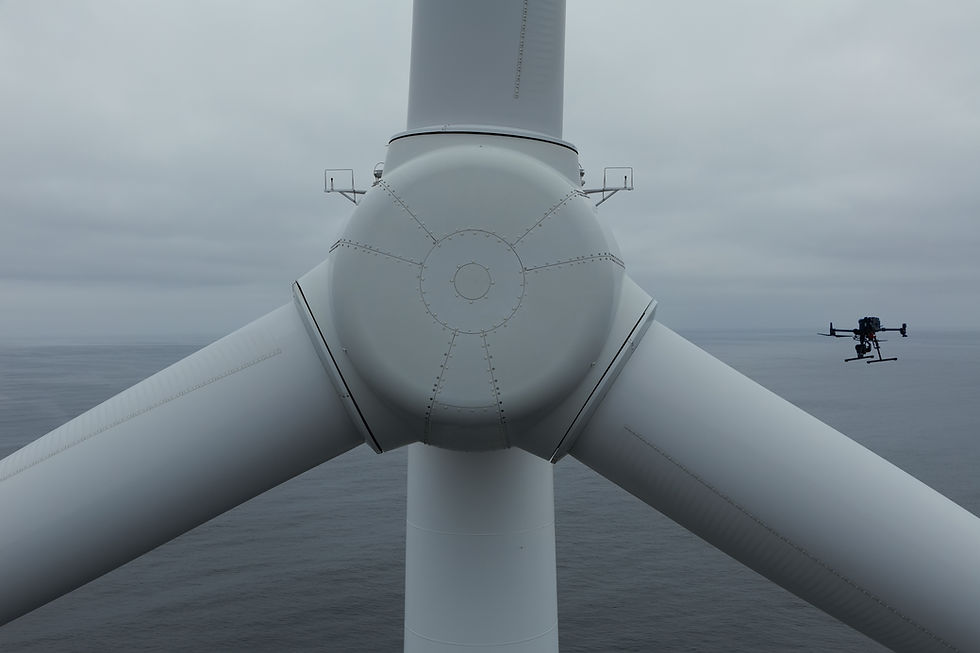Why robotics play a key role in the path to Net Zero
- Innovair
- Dec 21, 2022
- 4 min read
Updated: Jan 11, 2023
Author: Stuart Lawson
Reaching net zero will require a concerted effort by governments, businesses, and individuals around the world. It will also require significant investment in new technologies and infrastructure, as well as changes in policy and behaviour. It is widely acknowledged that the global community is not currently on track to meet the target of net zero greenhouse gas emissions by the middle of the century, as set out in the Paris Agreement.
The challenge is significant. Accelerating decarbonisation worldwide involves significant steps and transformational actions which we must take to reduce and eventually eliminate greenhouse gas emissions. In order to limit global warming and address climate change these actions will include managing energy demand, increasing energy efficiency, deploying carbon capture, utilisation and storage technology and shifting the energy mix by reducing the reliance on fossil fuels and moving toward lower and zero emissions electricity such as hydrogen and wind.

Demand for oil and gas in the UK in 2050 is estimated to be around 400 million barrels of oil equivalent (boe) per annum
The wind sector is now the world's fastest-growing source of electricity, with over 15% of Europe's power demand met by wind. In the next decade, the offshore wind sector is expected to attract almost $1 trillion in new investment, with EU governments pledging up to 160 GW of offshore wind by 2030.
While there is increasing focus on the development of renewable energy sources, fossil fuels such as oil and gas are still expected to account for a significant portion of the world's energy needs. The industry’s future is more difficult to predict but The Committee on Climate Change forecasts that demand for oil and gas in the UK in 2050 will be around 400 million barrels of oil equivalent (boe) per annum and it is currently estimated the UKCS could still be producing as much as half of the energy needed.
It is clear that both wind and oil & gas will make a significant contribution to the energy mix for the foreseeable future and, even just across these two energy sectors, the pivotal role that cost-effective, scalable, and efficient robotics will play in the path to net zero is already becoming apparent.
With the potential robotics offer in reinforcing safety, boosting production efficiency, and contributing to lower emissions, now is surely the time to accelerate the implementation of robotic solutions?
At Innovair, we firmly believe that the answer is YES!
Robotics will make an impact in most industry sectors and throughout the lifecycle of assets and infrastructure. Below we explore how they will support to:
Reduce Energy Consumption
Deliver Safer & More Efficient Operations
Extend Asset Life
By automating tasks using robots the duration of projects can often be significantly reduced. In some instances, the need for personnel to be involved can be eliminated completely, a significant benefit for dangerous tasks or those completed in hazardous environments. With wider scale adoption of autonomous robotics the potential is enormous however the current benefit realised is often a reduction in number of personnel involved and/or reduction in the duration which they are involved.
According to the Crown Estate over 80% of the cost of operations and maintenance in offshore wind is a function of accessibility e.g. getting technicians to sites via SOV or CTV, during tasks such as inspection. The ability to reduce the number of mobilisations, through the use of robotics, has clear advantages financially for operators, as well as in reducing the carbon footprint of works.
Robots can be used to perform tasks that are repetitive, time-consuming or costly for human intervention, such as inspecting infrastructure or monitoring large areas for environmental impacts. Their application in performing hazardous tasks such as working at heights or in confined spaces makes operations considerably safer, reducing the risk of injury to workers, whilst the efficiency benefits they deliver can help to optimise resource use and reduce the overall environmental impact of these tasks.

These time and personnel reductions can be seen in both industry sectors, for example an autonomous drone can inspect all three blades of a wind turbine effectively in 20-30 minutes, with overall downtime of the WTG less than one hour. This was traditionally completed by rope access and could take up to 1-2 days per turbine. Similarly, a structural inspection of an offshore oil & gas platform can be completed by a 2-man drone team in a matter of days versus up to several weeks with a rope access team.
Whether drones, ROVs, crawlers, integrated robotic systems or otherwise, robotics can improve the efficiency, safety, and reliability of various assets. By collecting valuable data more regularly, evaluating this data quickly and accurately and applying the understanding on performance and asset condition, routine maintenance and repair requirements can be managed better and support extended asset life which contributes to overall emissions reduction by reducing the need for new, carbon-intensive infrastructure.

+ Conclusion
Many countries and businesses have set ambitious emission reduction targets and are taking steps to reduce their emissions, and the cost of renewable energy is decreasing, making it more competitive with fossil fuels. However, much more needs to be done to accelerate the transition to a low-carbon economy and achieve the goal of net zero emissions. Overall, the use of robotics can help to reduce energy consumption and carbon emissions, improve safety and efficiency, and optimise resource use, making them a key component in the path to net zero.

A message from the author:
"Thanks for taking the time to read this blog on the impact of robotic inspection.
With decades of inspection & robotics experience, we hope to become your go-to team for trusted inspection advice, support & bespoke solutions.
Feel free to connect with me on LinkedIn."
Stuart Lawson BSc, MInstNDT LEP
Solutions Director








Comments